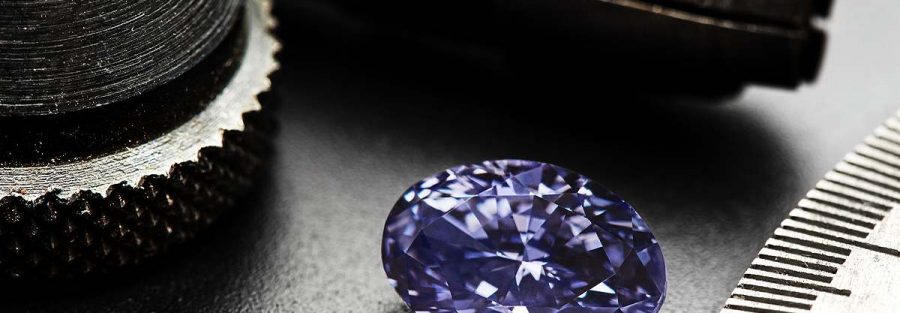Ever wondered how a diamond goes from a rough stone to a sparkling jewel? This blog post walks you through the entire journey of a diamond, highlighting each critical stage in the process, from mining and cutting to trading and retail.
The journey of a diamond, from mine to market, is a fascinating process that involves multiple stages, spanning several years or even decades. It transforms a raw, rough stone extracted from the earth into the polished gemstones that grace engagement rings, necklaces, and other fine jewelry. Here’s a detailed look at the journey of a diamond:
1. Exploration and Mining
Discovery: The journey begins with the discovery of diamond deposits. Geologists search for kimberlite pipes or alluvial deposits where diamonds are typically found. Kimberlite pipes are deep volcanic formations, while alluvial deposits are diamonds that have been transported by water from their original source.
Mining: Once a diamond deposit is located, mining begins. There are two primary methods of diamond mining:
- Open-pit mining: This is used when diamonds are found near the surface. It involves removing large amounts of earth to reach the diamond-bearing ore.
- Underground mining: Used when diamonds are located deeper within the earth, this method involves drilling shafts to access the ore.
- Alluvial mining: In certain regions, diamonds are extracted from riverbeds using manual labor or machinery.
Extraction: Once mined, the rough diamonds are separated from the surrounding rock, dirt, and other materials. This process involves crushing, sifting, and sometimes using water or gravity to help separate the diamonds from the waste.
2. Sorting and Valuation
Sorting: After extraction, rough diamonds are sorted based on various characteristics, including size, shape, color, and clarity. Sorting is usually done by experienced gemologists who can identify the potential value of each stone.
Valuation: Diamonds are valued using the “4 Cs” – Carat, Cut, Color, and Clarity. These characteristics will influence the price and desirability of the diamonds in the market.
- Carat: Refers to the weight of the diamond. Larger diamonds are rarer and more valuable.
- Cut: Refers to how the diamond has been shaped and faceted, which affects its brilliance and sparkle.
- Color: Diamonds are graded on a scale from D (colorless) to Z (light yellow or brown).
- Clarity: Measures the presence of internal or external imperfections (called inclusions and blemishes). The fewer the flaws, the higher the clarity.
Grading: Diamonds are graded by independent gemological laboratories, such as the Gemological Institute of America (GIA), which certifies the quality of the diamonds based on the 4 Cs.
3. Cutting and Polishing
Cutting: Once the rough diamond is sorted and valued, it is sent to a diamond cutting facility. Here, skilled professionals, called diamond cutters, work to shape the rough diamond into its final form. The cutting process involves planning the optimal way to shape the diamond to maximize its brilliance, taking into account its unique characteristics.
- The cutter’s goal is to determine how to cut the stone in a way that minimizes waste while maximizing the brilliance and symmetry of the final product.
- Diamonds are cut into a variety of shapes, such as round, princess, emerald, or cushion, depending on market demand and the original rough diamond’s characteristics.
Polishing: After cutting, the diamond is polished to enhance its shine and sparkle. Polishing involves smoothing the surfaces of the diamond facets to create a mirror-like finish. This step is essential to bring out the diamond’s brilliance and fire.
4. Certification
After cutting and polishing, the diamond undergoes certification by a reputable gemological institute, such as GIA or AGS (American Gem Society). A diamond certificate provides a detailed description of the diamond’s characteristics, including its 4 Cs.
The certificate is essential for buyers as it guarantees the authenticity and quality of the diamond. The certification process also includes laser inscribing a unique serial number on the diamond, which can be used to identify it and verify its authenticity.
5. Distribution
Wholesale Distribution: After certification, diamonds are sold to wholesalers or diamond dealers, who act as intermediaries between the cutting centers and the retail market. These wholesalers distribute diamonds to jewelers, both in local markets and international markets.
Diamond Bourses: These are trade organizations or exchanges where diamond dealers buy and sell diamonds in bulk. Some of the most well-known diamond bourses are located in Antwerp (Belgium), Tel Aviv (Israel), and New York City (USA).
Jewelry Manufacturers: Many diamonds are sold to jewelry manufacturers who incorporate them into engagement rings, necklaces, bracelets, and other jewelry pieces. The diamonds are often set in precious metals such as gold, platinum, or silver.
6. Retail and Consumer Purchase
Retailers: The diamonds are then sold through retailers or online platforms, where consumers can choose from a variety of diamond jewelry. Retailers may include independent jewelers, chain stores, or luxury brands.
Marketing: Diamonds are marketed through advertisements, online platforms, and promotional events. The most famous example is the De Beers “A Diamond is Forever” campaign, which helped to establish diamonds as the ultimate symbol of love and commitment.
Consumer Purchase: The final stage in the journey is when consumers purchase the diamond. Customers often buy diamonds for significant occasions, especially engagement rings. The diamond’s price is determined by its carat weight, cut, color, and clarity, and its market demand.
7. Aftermarket and Recycling
Jewelry Resale and Recycling: After a diamond has been purchased, it may be resold or repurposed in the future. Diamonds are often passed down through generations, contributing to their timeless value. Additionally, diamonds can be recycled by jewelers who repurpose them into new jewelry pieces or sell them to manufacturers to be reused in new settings.
Sustainability and Ethical Sourcing: With growing awareness of ethical sourcing and sustainable practices, many consumers now prefer diamonds that are conflict-free, meaning they are not sourced from areas that fund violence or human rights abuses. This has led to the rise of lab-grown diamonds and ethical mining practices, which aim to reduce the negative social and environmental impacts associated with traditional diamond mining.
Conclusion
The journey of a diamond from mine to market is an intricate process that involves exploration, mining, sorting, cutting, polishing, certifying, and distributing before it reaches the consumer. Along the way, diamonds undergo rigorous evaluation and craftsmanship to ensure their beauty and value. With increasing attention on ethical sourcing and sustainability, the diamond industry is evolving to meet the demands of conscious consumers while continuing to deliver the timeless allure and luxury associated with these precious stones.








